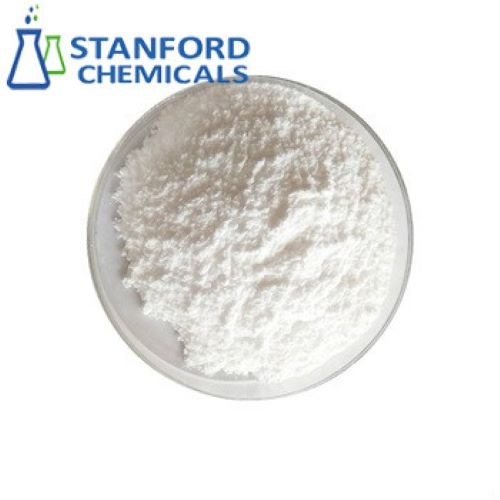Which Is Better, Hyaluronic Acid or Sodium Hyaluronate?
1. What is hyaluronic acid?
Hyaluronic acid (HA, or (C14H21NO11) n) is an important humectant. It is a polymer of disaccharides composed of D-glucuronide and N-acetyl glucosamine. Hyaluronic acid is an important component of the human intercellular matrix, such as the body’s connective and neural tissues.
Hyaluronic acid locks water molecules inside the human body like skin and joints. It is applied to a variety of fields for its water retention function. HA can also promote cell proliferation and differentiation and remove oxygen-free radicals, so it is generally used to make skin-care products for moisture and anti-aging. Additionally, this humectant is also found in the medical field to treat arthritis and cataract.
Hyaluronic acid is commonly manufactured by industrial synthesis. Stanford Chemicals Company is an experienced supplier of hyaluronic acid of different grades. For more information about HA and related products, please check our website.
2. What is sodium hyaluronate?
Sodium hyaluronate is the sodium salt of hyaluronic acid. It is a glycosaminoglycan and long-chain polymer of sugar, and it is composed of Na-glucoronate-N-acetyl glucosamine. This sodium salt could be found in the extracellular matrix of mammalian connective, neural tissues, and the corneal endothelium.
Sodium hyaluronate is a synonym for hyaluronic acid. In fact, the two terms are often used interchangeably in the skincare field. Sodium hyaluronate can keep moisture and promotes cell growth and renewal as well. This humectant is applied to different beauty products to keep moisture and reduce the effect of aging. It is also used in medical surgeries. Topically applied sodium hyaluronate can facilitate the absorption of biomacromolecules, i.e. pharmaceuticals, and function like a nanocarrier.
Similarly, sodium hyaluronate is obtained from animal tissues or bacterial fermentation. Stanford Chemicals Company provides high-quality sodium hyaluronate within a short lead time.
3. What are the differences between hyaluronic acid and sodium hyaluronate?
Hyaluronic acid and sodium hyaluronate are both popular choices for cosmetic uses. They are both hydrating and anti-aging. Consumers can find hyaluronic acid and its salt form in many products like serums and creams. They are also applied to oral supplements.
What is the biggest difference? Sodium hyaluronate has a smaller molecular size, which means that it can penetrate the skin better. Other than that, they both offer the same benefits.
They have a slight difference in terms of features.
- Sodium hyaluronate is more stable than hyaluronic acid. The salt form is a more stable version, and it could resist oxidation for its higher stability.
- It is easier for sodium hyaluronate to penetrate the skin surface and enhance the skin barrier. Sodium hyaluronate has a lower molecular size, so it could penetrate deeper and provide intense hydration.
- In short, hyaluronic acid attracts water molecules on the surface, while its sodium salt moist cells deeper. Other than that, they offer the same benefits for beauty lovers.
4. Can you use hyaluronic acid and sodium hyaluronate together?
Beauty lovers can use hyaluronic acid and sodium hyaluronate together to moisturize their skin. These chemicals are both gentle and highly hydrating. Both ingredients are suitable for all skin types and compatible with other ingredients. Use them together for an intense hydration effect.
Cosmetic products like serums, moisturizers, and facial oil containing hyaluronic acid and sodium hyaluronate can provide diverse benefits as listed:
- Hydration Effect: The key benefit of these two chemicals is hydration. They could continuously draw moisture in from the surrounding environment and provide lasting hydration for the skin in the long term.
- Repairing Effect: They are helpful to protect our body from harmful toxins like UV rays, environmental pollution, and drastic temperature changes.
- Protective Barrier: In the long term, hyaluronic acid and its sodium salt could form a complex mesh structure and strengthen the protective barrier for the skin. Wrinkles would be reduced and the plump and glowing skin would be obtained.
5. Conclusion
Hyaluronic acid and sodium hyaluronate nearly represent the same chemical, and the two terms are often used interchangeably in the skincare and medical world. You can use them at the same time for a better hydrating effect. The slight difference is that sodium hyaluronate is more stable and penetrates the surface of the skin more easily than hyaluronic acid.
Stanford Chemicals Company is a pure organic hyaluronic acid wholesale supplier. Hyaluronic acids of medical grade, cosmetic grade, and food grade are available on our website. High molecular weight, middle molecular weight, and low molecular weight sodium hyaluronate are also available. They are applied to a range of fields including food supplements, cosmetics, eye drops, and pharmaceuticals. For more detailed information, please visit our website.


Exactly.